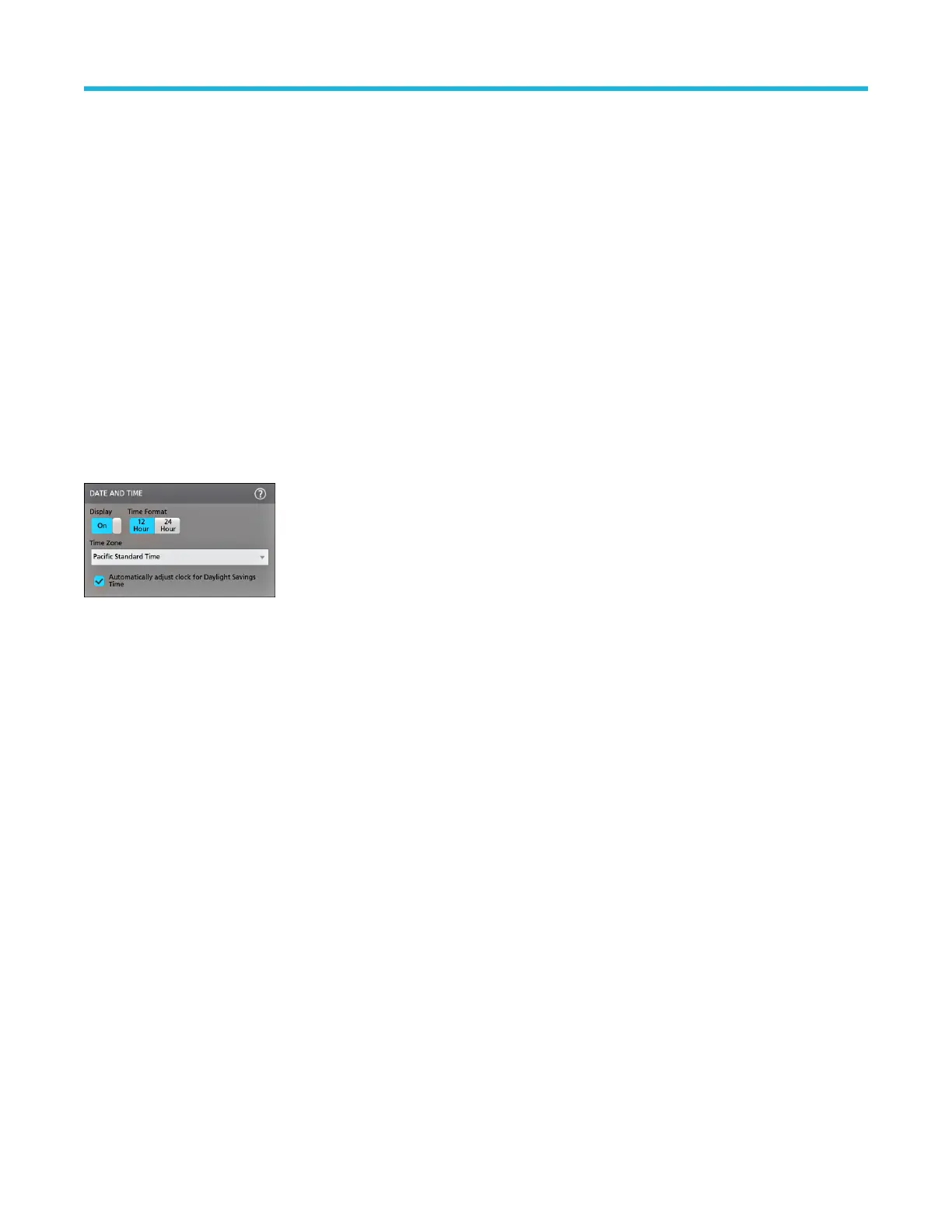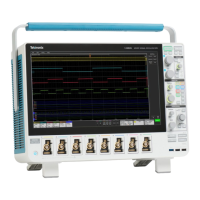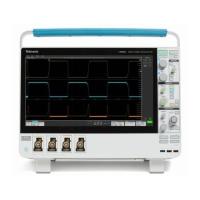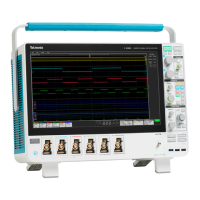Configure the instrument
Configurations to help operate your instrument efficiently. Refer to the instrument help for additional configuration information.
Set the time zone and clock readout format
Set the time zone to your region so that saved files are marked with the correct date and time information. You can also set the time format
(12 or 24 hour clock).
About this task
To access the user interface on a Low Profile instrument, connect a monitor to a video port on the rear of the instrument, and connect a
mouse to any USB Host port. You do not need to connect a mouse if your remote monitor is touch-capable. You can also remotely access
the user interface of a network-connected instrument by entering the instrument's IP address in a web browser.
To remotely set a control or run this task on a Low Profile instrument, see the instrument Programmer Manual (Tektronix part number
077-1305-xx) for the correct command or commands to use.
Procedure
1. Double-tap the Date/Time badge (bottom-right of screen) to open the configuration menu.
2. To turn off showing the date and time on the screen, tap Display button to Off.
To turn on date/time display again, double-tap in the blank area where the date/time badge was displayed to open the configuration
menu, and set the Display button to On.
3. Select a time format (12 Hour or 24 Hour).
4. Tap the Time Zone field and select the time zone that applies to your location.
5. Tap anywhere outside of the menu to close it.
Download and install the latest instrument firmware
Installing the latest firmware helps ensure that your instrument has the latest features and is taking the most accurate measurements.
Before you begin
Save any important on-instrument files (waveforms, screen captures, setups, and so on) to a USB drive or network. The installation
process does not remove user-created files, but it is a good idea to back up important files before an update.
To access the user interface on a Low Profile instrument, connect a monitor to a video port on the rear of the instrument, and connect a
mouse to any USB Host port. You do not need to connect a mouse if your remote monitor is touch-capable. You can also remotely access
the user interface of a network-connected instrument by entering the instrument's IP address in a web browser.
Procedure
1. Power on the oscilloscope.
2. Determine the current version of firmware installed on the instrument in the About window under the Help menu
Configure the instrument
40

